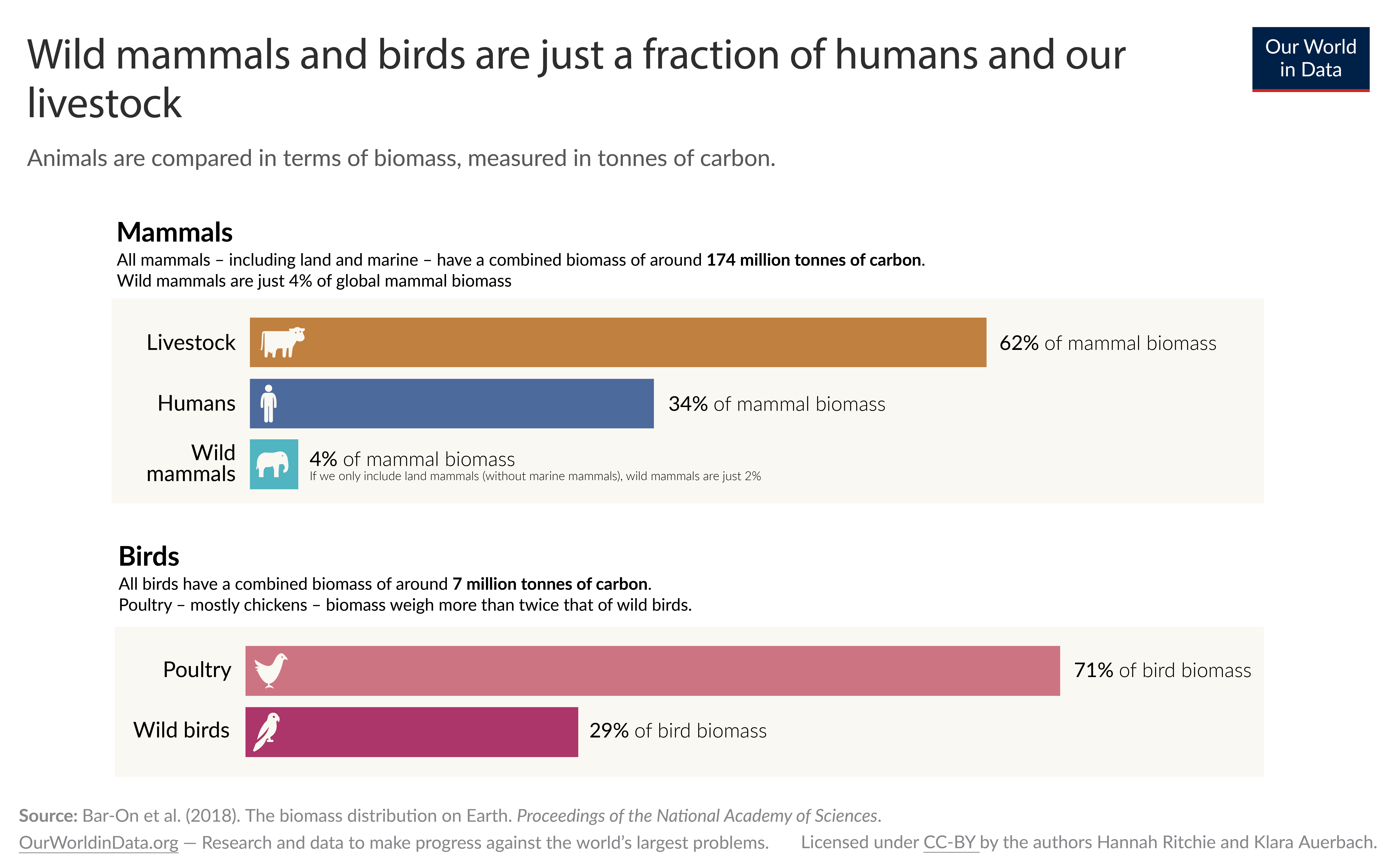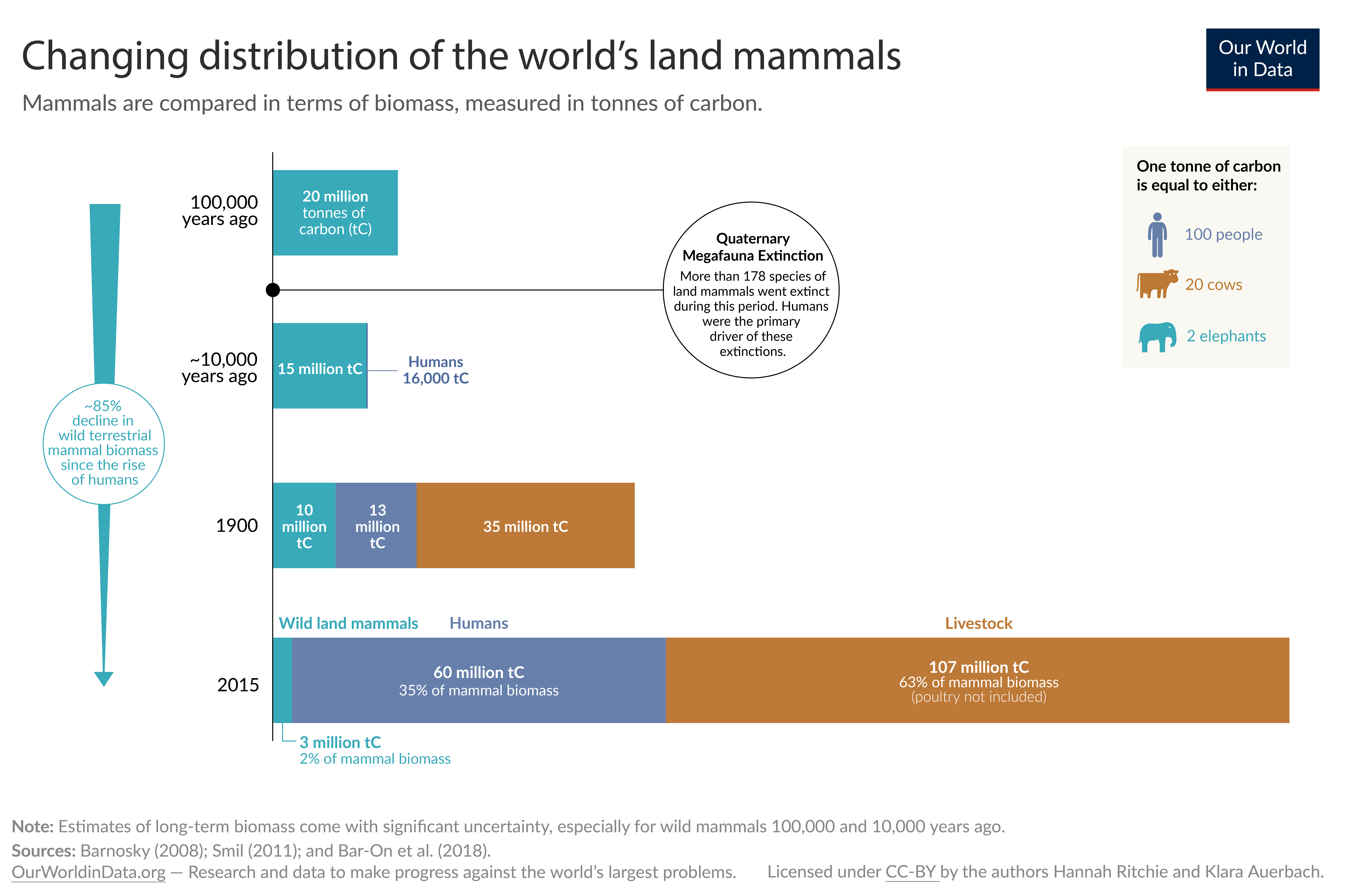Humans have transformed the mammal kingdom.
A diverse range of mammals once roamed the planet. This changed quickly and dramatically with the arrival of humans. Since then, wild land mammal biomass has declined by an estimated 85%.
Humans are now the dominant species.
We see this when we look at the distribution of mammals across the world today.
There are various ways that we could look at mammal species: we could compare them based on the number of individuals: their abundance. This tends to favor very small animals with large populations and doesn’t necessarily give us an idea of how dominant different species are.
Instead, ecologists often look at a different metric: biomass. This not only takes into account the number of animals but also factors in their size. Each animal is measured in tonnes of carbon, the fundamental building block of life.1 Biomass gives us a measure of the total biological productivity of an ecosystem. It also gives more weight to larger animals at higher levels of the ecological ‘pyramid’: these rely on well-functioning bases below them.
Let’s then look at the breakdown of the global mammal kingdom in 2015. This data is sourced from the study by Yinon Bar-On, Rob Phillips, and Ron Milo.2
Each icon is equivalent to around one million tonnes of carbon. This includes both land and marine wild mammals.
Wild mammals make up just 4% of the mammal kingdom.
The dominance of humans is clear. Alone, we account for around one-third of mammal biomass. Almost ten times greater than wild mammals.
Our livestock then accounts for almost two-thirds. Cattle weigh almost ten times as much as all wild mammals combined. The biomass of all of the world’s wild mammals is about a third of our pigs alone.

Global poultry weighs more than twice that of wild birds
When I show people the chart above, one question always comes up: what about chickens? Of course, chickens are not mammals. But we can do a similar comparison between poultry and wild birds.
For birds the distribution is similar: poultry biomass is more than twice that of wild birds. We see this in the chart.

Wild mammals have declined, but the total amount of mammal biomass has increased a lot
The charts above give us a snapshot of how the mammal kingdom looks in the modern day. But both the distribution and amount of mammal biomass have changed dramatically over time.
In the visualization we can see the total biomass of mammals at four points in time: 100,000 years ago; 10,000 years ago, in the year 1900, and the 2015 snapshot we looked at previously.3
In the last 100,000 years, as the human population increased, wild mammal biomass has declined by 85%.4 I looked at this history in a related article.
The decline of wild mammals is not the only change. At the same time, humans and our livestock have grown significantly – from millions to billions.
What’s interesting is that, while the diversity of the mammal kingdom has decreased, its total size has expanded a lot. Terrestrial mammals weighed in at an estimated 20 million tonnes of carbon 10,000 years ago. This is now around nine times larger.5
Within centuries, humans have increased the size of the mammal kingdom almost ten-fold.

Keep reading at Our World in Data
Acknowledgments
Many thanks to Max Roser for providing feedback and suggestions on this article and its visualizations.




